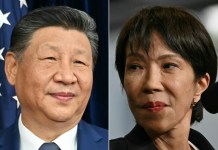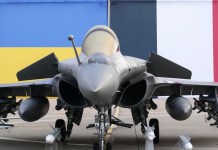With China completing a 6.15-km long bridge on the Padma River, Bangladesh’s largest-ever infrastructure endeavor, India has decided to leave no stone unturned in keeping its sensitive neighbor happy with similar but India-backed projects.
On December 17, Prime Minister Narendra Modi and his Bangladeshi counterpart Sheikh Hasina jointly inaugurated a railway link between Haldibari in India and Chilahati in Bangladesh during a virtual bilateral summit. With this rail link, the total number of railway lines between the two countries has increased to five. India has revived all these five rail links that used to be operational between India and Bangladesh before 1965.
In fact, seven railway lines were operational between the two until 1965. Now, with the Haldibari-Chilahati rail link, five are actively operational, including Petrapole-Benapole, Gede-Darshana, Singhabad-Rohanpur, and Radhikapur -Birol.
Work is ongoing on two more connections. The sixth pre-1965 rail link (Kulaura-Shahbazpur), work on which is underway, will revive the railway connectivity between Karimganj in Assam and Sylhet in Bangladesh.
A railway that links Akhaura in Bangladesh to Agartala is under construction and will be ready by 2022 when India will commemorate the 75th anniversary of its independence. Passenger trains such as Maitree and Bandhan Express already link India and Bangladesh.
China is developing a mega smart city near Dhaka, building an airport in Sylhet in eastern Bangladesh, and developing a defense relationship with Bangladesh. But still, in Prime Minister Sheikh Hasina, India finds a responsive leader who does not play a China-card against New Delhi. In fact, she displayed a nice gesture to Indian Prime Minister Narendra Modi on December 30, that too at a time when the Modi government is beset with agricultural issues with a powerful section of the protesting farmers.
That gesture on the eve of the New Year was its decision to reduce import duty on Indian rice exports to 25% from 62.5%. This will pave the way for Indian rice exporters to export non-basmati rice to the country and fetch better prices for the grain. Bangladesh is expected to import about 500,000 tons of non-basmati rice in this financial year.
PM @narendramodi and Prime Minister of Bangladesh Sheikh Hasina held the virtual summit.
A comprehensive review of the entire framework of bilateral relationship, including further strengthening cooperation in the post COVID era was on the agenda. pic.twitter.com/tx6faLOsC1— Anurag Srivastava (@MEAIndia) December 17, 2020
Already two Indian companies have bagged contracts for 100,000 tons of rice exports to Bangladesh. The Bangladesh government is now in talks with NAFED (National Agricultural Cooperative Marketing Federation of India) to import another 250,000 tons of rice under a government-to-government trade initiative. The rest of 150,000 tons will be exported to the country by private parties.
Modi and Hasina maintain bonhomie despite China’s increased developmental activities in Bangladesh and despite the controversial political decision of the Modi government to legislate the Citizenship Amendment Act that projected Bangladesh as much as Pakistan to be countries where religious minorities have been persecuted.
Modi is scheduled to visit Bangladesh in March 2021 to join the golden jubilee celebration of Bangladesh’s independence in March 2021.
Modi and Hasina have helped each other politically over the last six years. It was Modi who agreed to solve the knotty territorial issues with Bangladesh by means of the 2015 Land Boundary Agreement (LBA) and the exchange of enclaves (chhitmahals) and adverse possessions between the two countries.
Modi also accepted a United Nations court-directed decision that awarded more than three-quarters of a disputed area to Bangladesh and opened the way for it for more energy exploration in the sea.
On her part, Hasina has solidly backed Indian requests to end aiding and abetting the anti-India elements, including the secessionist organizations in India’s Northeast, on Bangladesh soil. Even on the controversial citizenship laws, her government has described them to be India’s internal matters.
Thanks to concerns over the Chinese inroads into the region, Bangladesh figures prominently in Modi’s Act East policy in general and ‘Neighbourhood First’ policy in particular. And in this, the Modi government’s vision is said to be captured in, what external affairs minister S. Jaishankar says, “the 3 Cs – Connectivity, Commerce, and Cultural Commonalities.”
At another level, India is also working through multilateral initiatives such as BIMSTEC and BBIN or the Bangladesh-Bhutan-India-Nepal grouping.
মুজিববর্ষ উপলক্ষে প্রধানমন্ত্রী নরেন্দ্র মোদী এবং বাংলাদেশের প্রধানমন্ত্রী শেখ হাসিনা যৌথভাবে বঙ্গবন্ধুর সম্মানে একটি ডাকটিকিট উন্মোচন করেছেন।https://t.co/mraknqcdcb
— India in Bangladesh (@ihcdhaka) December 17, 2020
Apart from the rail links, the two countries are getting “reconnected” (disruption was due to the partition of India in 1947) through rivers and seas. Goods from West Bengal can now reach Tripura through waterways up to Ashuganj port in Bangladesh and further by road up to Agartala. According to Jaishankar, recently, a goods consignment was also moved from Kolkata to Agartala under the India-Bangladesh agreement on the use of Chittagong port for transporting goods to and from Northeast India.
For the first time, Tripura was connected to Bangladesh through the inland waterways route. “This new route can further connect Tripura with the National Waterways of India. These new initiatives provide alternative and shorter routes for transporting goods between the North East and the rest of India through Bangladesh”, the Indian foreign minister said.
Road transportation links are also being improved. Indian and Bangladesh nationals can move by bus between Shillong and Dhaka and between Agartala and Kolkata via Dhaka. Goods and people move by road between the two countries through a network of Land Customs Stations and Integrated Check Posts.
Besides, India and Bangladesh are working on building an India-Bangladesh Friendship Pipeline. Hydrocarbons from refineries in Assam can flow through this pipeline into Bangladesh. LPG now reaches Tripura through Bangladesh entailing lower transportation costs.
India realizes that Bangladesh is a rapidly growing economy with a population of 160 million. It is a large and growing market for Indian products and services. It will certainly not like such an economy to be dominated by China, Chinese projects, and Chinese goods.
Follow EurAsian Times on Google News




